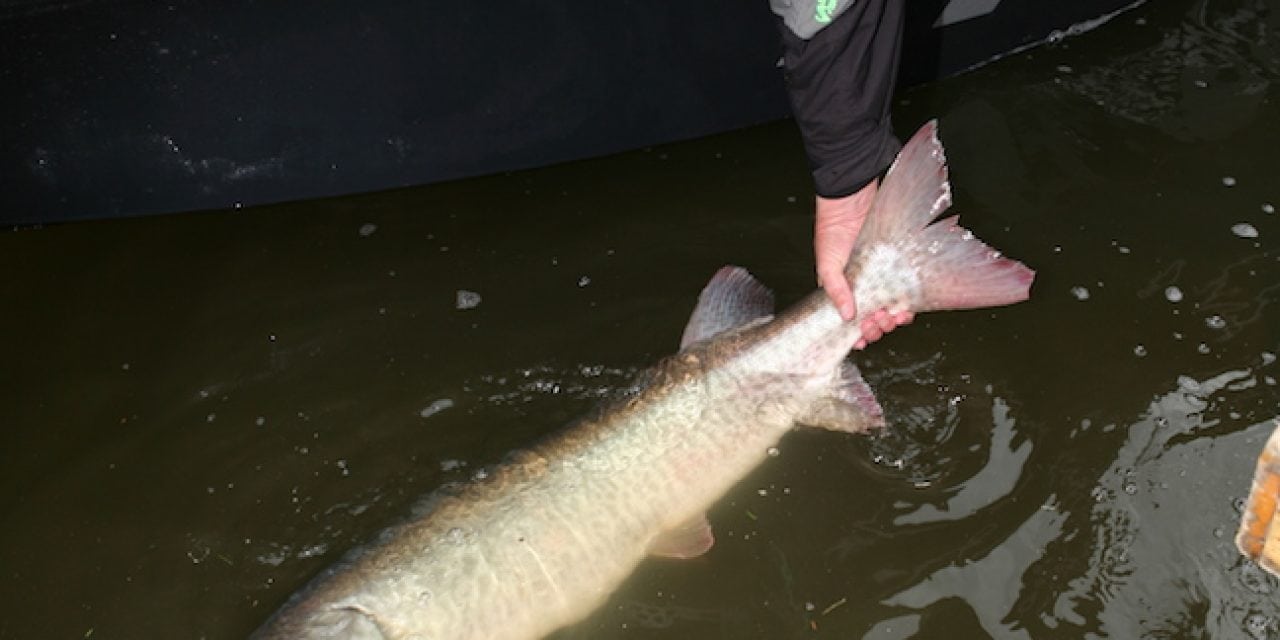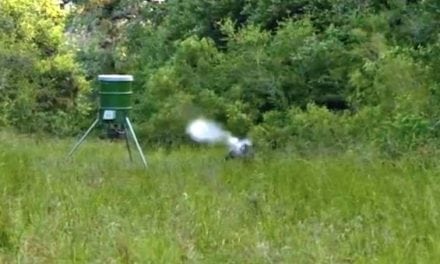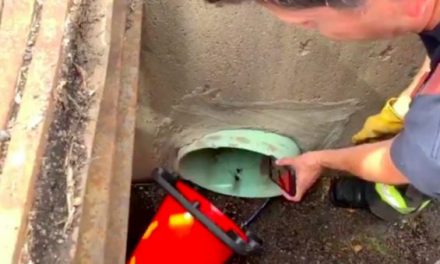It’s a great time for Mountain State sportsmen and women, as fall hunting and fishing opportunities abound throughout the state.
The fall period brings some of the best fishing and hunting opportunities of the year in the Mountain State, with cooler water making fish more active, and numerous hunting seasons opening for those interested in chasing game.
Some of the best to consider this magical time of year include deer, muskie and bass.
NEW RIVER MUSKIES
According to Tommy Cundiff, River Monster Guide Service, October is a superlative time to visit the New River for muskies.
“The October through December period is the best time to catch numbers of good-size muskies on the New,” Cundiff said. “We usually average catching three muskies a day then, with numerous other follows, strikes and lost fish. For any other fish, catching just three would be terrible. But for muskies, I think that’s pretty doggone good.”
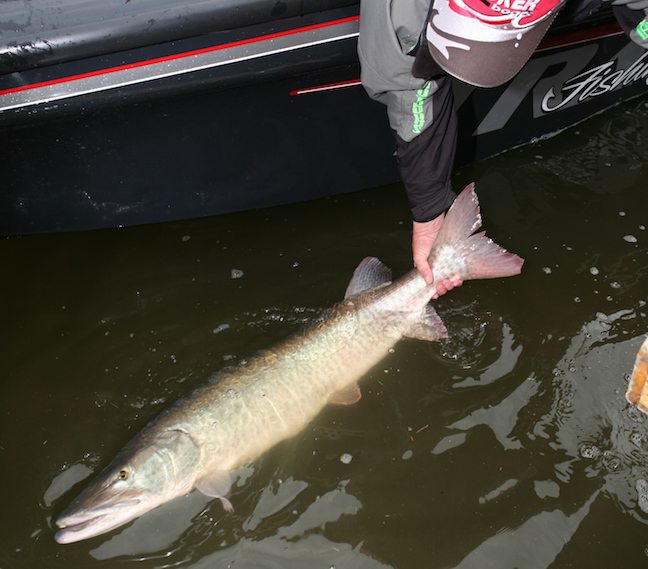
October is a superlative time to visit the New River for muskies. (Photo by Ron Sinfelt)
The Bluefield sportsman says that the fish average 36 to 38 inches long and weigh 18 to 20 pounds, with some reaching 40 to 45 inches and topping out at 30 to 35 pounds.
One key to attaining that three-fish day, continues the guide, is concentrating on muskies. Most muskies are caught by accident while anglers are fishing for smallmouth bass, but focusing on this member of the pike family can have impressive results.
One reason this time of year is good for muskies is that they can typically be found in very predictable locales this time of year. Look for them to hunker in long, deep runs that host a great deal of wood cover in the form of downed sycamores, sunken trees and root balls, as well as beaver lodges and flotsam-strewn shorelines. The West Virginia section of the New contains many such places, especially below the Class I-IV rapids that pock the waterway.
Regarding lures, the Mepps Muskie Killer inline spinner is a good choice, as is the 5/8-ounce Blue Fox Super Vibrax No. 6, especially when slow-rolled up and over wood cover.
Another effective bait is the Rapala X-Rap 14. Interestingly, this artificial is primarily known as a saltwater lure, but muskies don’t seem to mind that the lure has a seductive movement in freshwater, too. This X-Rap, like the smaller models that bass fishermen use, is best employed as a slash bait, with lots of hard jerks and quick pauses.
There are numerous good areas to fish for muskies on the New River. To fish from Stateline Falls, also known as Wylie Falls, to Shanklins Ferry, the river left access point is considered informal and located off River Road (near a now closed power plant). But it is popular because this is where the New River enters into the Mountain State for the first time. The formal access point for this junket is at Glen Lyn, Virginia, and requires a Virginia license to fish until Stateline Falls. The take-out is on river right off County Route 23. Stateline Falls is a challenging Class II; portage on river left.
Cundiff informs that numerous places exist on this float for muskies. The foremost is Wylie Island, which is below Stateline Falls. This long island contains good shoreline cover in the form of laydowns and boulders, and deep water exists in places. Also worth exploring are the pools below the half dozen or so Class I rapids that dot the river below Stateline Falls. Start fishing when the water slows and deepens.
The second float is Shanklins Ferry to the Mouth of Indian Creek (six miles). A major muskie hotspot is a cliff that occurs about a mile into the trip. Another great spot is the Whale Rock area. Whale Rock is a massive mid-stream boulder that looks, appropriately enough, like a whale. Mid-river pools characterize this locale and conceal good-size muskies. Also of note are the creeks that enter the New on this float, especially Cedar Branch and Indian Creek.
“Smallmouths don’t seem to like areas where creeks enter into a river,” says Cundiff. “Maybe it’s because these places are usually silted in. But the New’s muskies really like to concentrate at these spots.”
This area contains the Class II-III Harvey Falls, located below Whale Rock, but portage can be performed on the right. Below Indian Creek, the river slows noticeably as the backwaters of Bluestone Lake come into play. The next float is Bluestone Dam to Brooks Falls (seven miles), which has only one rapid of note, the Class I-II Tug Creek.
Cundiff says two of the best areas are at the beginning of the float, above and below the Route 3 and 20 bridges. A number of small islands characterize this part of the New as well, adding to the muskie possibilities. In this same general area, the Greenbrier River enters the New on the right, and is worth some time and effort. Forage fish often stack up at the entrance, and the muskies take advantage of that. However, don’t miss the take-out above the Class III Brook Falls.
The final excursion is from Brooks Falls to Sandstone Falls (four miles). The only major rapid is the Class II Brooks Ledge near Brooks Island. This area, which occurs on the first leg of the junket, is far and away the best place to prospect for muskies. Concentrate on the deep pools in this section, but don’t miss the take-out on River Road above Sandstone Falls, as Sandstone is not runnable.
“If at all possible, try to fish for the New’s muskies on an overcast day after a sunny, warm day,” said Cundiff. “The sunny day will warm the water a few degrees, and the overcast day that follows will usually find the muskies feeding heavily.”
OHIO RIVER BASS
The Ohio River runs along the border of West Virginia for 256 miles, providing countless fishing opportunities.
“The Ohio has its ups and downs from pool to pool, year to year, based on spawns,” said Dave Maurice. “Right now, the best two pools for West Virginians to fish are the St. Marys and Belleville ones. The reason is that both of these pools have numerous backwaters and tributaries that allow the bass to have a good place to spawn in years when high water conditions wipe out the spawn on the main part of the river.”

Anglers have a good chance of landing a big one as fall fishing action starts heating up. (Photo By Ron Sinfelt)
According to Maurice, the smallmouth action has been improving in recent years on both of these pools, especially come autumn. He suggests targeting barges that have been sunk along shorelines to prevent erosion. The outside edges of these barges can be especially good, as are any type of creek tributary.
Maurice says to look at the surrounding terrain and try to locate washes, also known as culverts, cascading down the hillside and entering the river. Even if they are dry, they still attract smallmouths because of the gravel that has entered into the river from them. That debris often forms underwater points that can really draw brown bass in the fall.
For largemouths, Maurice likes to concentrate on the weedbeds and lily pads, which continue to attract bass well into the fall.
“People don’t realize that the Ohio is fairly deep for a river and the water temperature remains well into the 50s even in December,” said Maurice. “The lower pools of both St. Marys and Belleville have a lot of weedy areas, and that’s where you should concentrate.”
Other forms of cover to look around for largemouths are backwaters and eddies. And don’t overlook the many tiny creeks that enter into the Ohio.
For lures, especially around barges, visible wood and weedbeds, Maurice recommends the 1/4 or 3/8-ounce Venom Trac-Rite buzzbait zoomed by the edges of cover, especially early in the morning. Later, crankbaits and spinnerbaits can be used to probe these same areas. As the day wears on and the largemouths and smallmouths become less active, Maurice switches to tubebaits or soft-plastic jerkbaits.
“As popular as it is in the spring and summer, the Ohio is very lightly fished in the fall,” said Maurice. “That’s strange because very good fishing can continue well into December.
STONEWALL JACKSON DEER
The New courses through Southern West Virginia, and the Ohio forms the state’s northern border, but right in the middle of the Mountain State is one of the best public lands — the 18,289-acre Stonewall Jackson Lake WMA in Lewis County.
“Stonewall, traditionally, has been regarded as one of our top WMAs for deer, especially being popular with bowhunters,” said Brennon O’Sullivan, the superintendent at Stonewall Jackson Lake State Park. “The lake borders much of the WMA, and one of the things that some hunters like to do is use a boat to access remote areas of the public land. Those are places where the deer aren’t accustomed to seeing many people, and so that’s an advantage.”
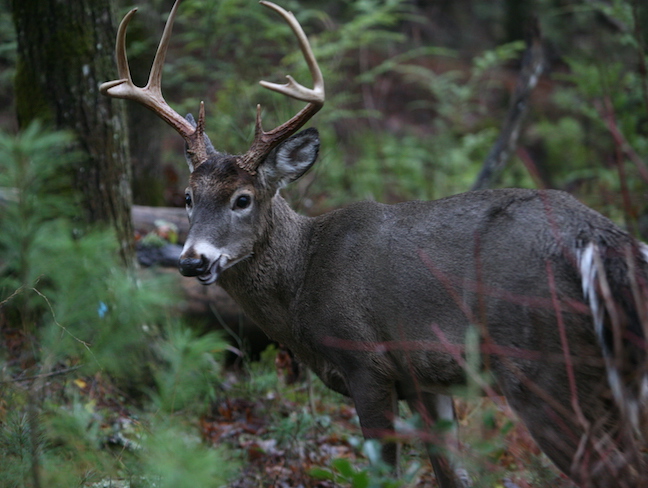
Bow season is a great time to target big white-tailed bucks. (Photo by Ron Sinfelt)
Stonewall has other virtues as well. WMA supervisor Delbert Vandevander has been hard at work creating food plots, managing openings and performing some timber cuts. All of this has added to the diversity of habitat, which was already quite substantial. The WMA has old fields, mature oak stands, brushy openings and several old farms within its borders.
Yet another important habitat feature comes in the form of creeks. Many creeks drain into Stonewall Jackson Lake and are quite wide at their mouths. But further back, these tributaries are much narrower and contain a goodly number of white and red oak trees, thriving in the rich soil. These upper tributaries can be outstanding places to place a tree stand.
Finally, the Stonewall WMA has another, fairly uncommon trait for a public land of its size — it is not as steep and mountainous as many of West Virginia’s WMAs, such as the Monongahela and George Washington and Jefferson national forests. Stonewall lies in the rolling hill country, with a fairly gentle topography.
Angling for muskies on the New River, fishing for largemouths and smallmouths on the Ohio, and hunting for deer on the Stonewall Jackson WMA are just three of many choices for sportsmen this autumn. Any one of these destinations would be a great place to experience.
The post Fall Hunting and Fishing in West Virginia appeared first on Game & Fish.

